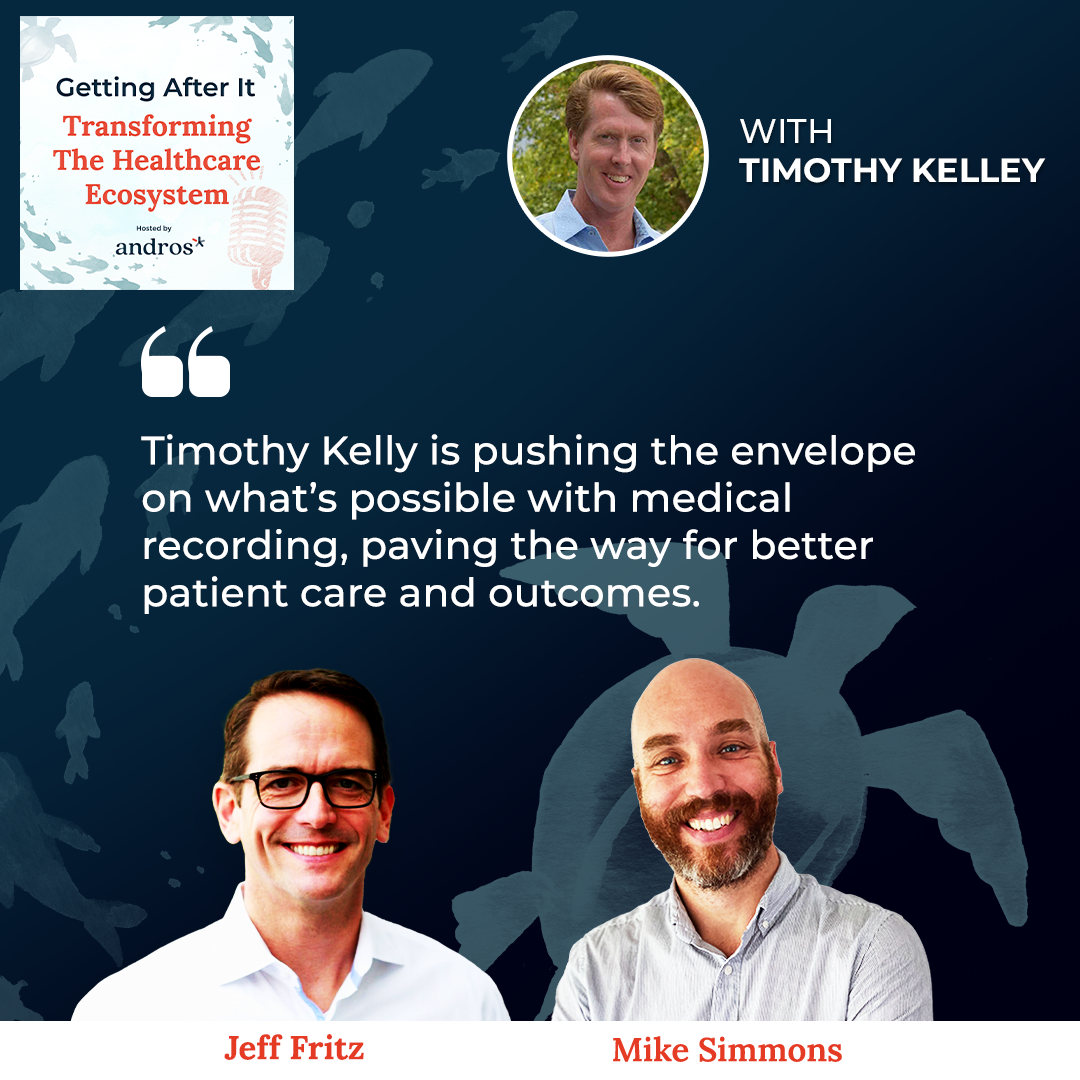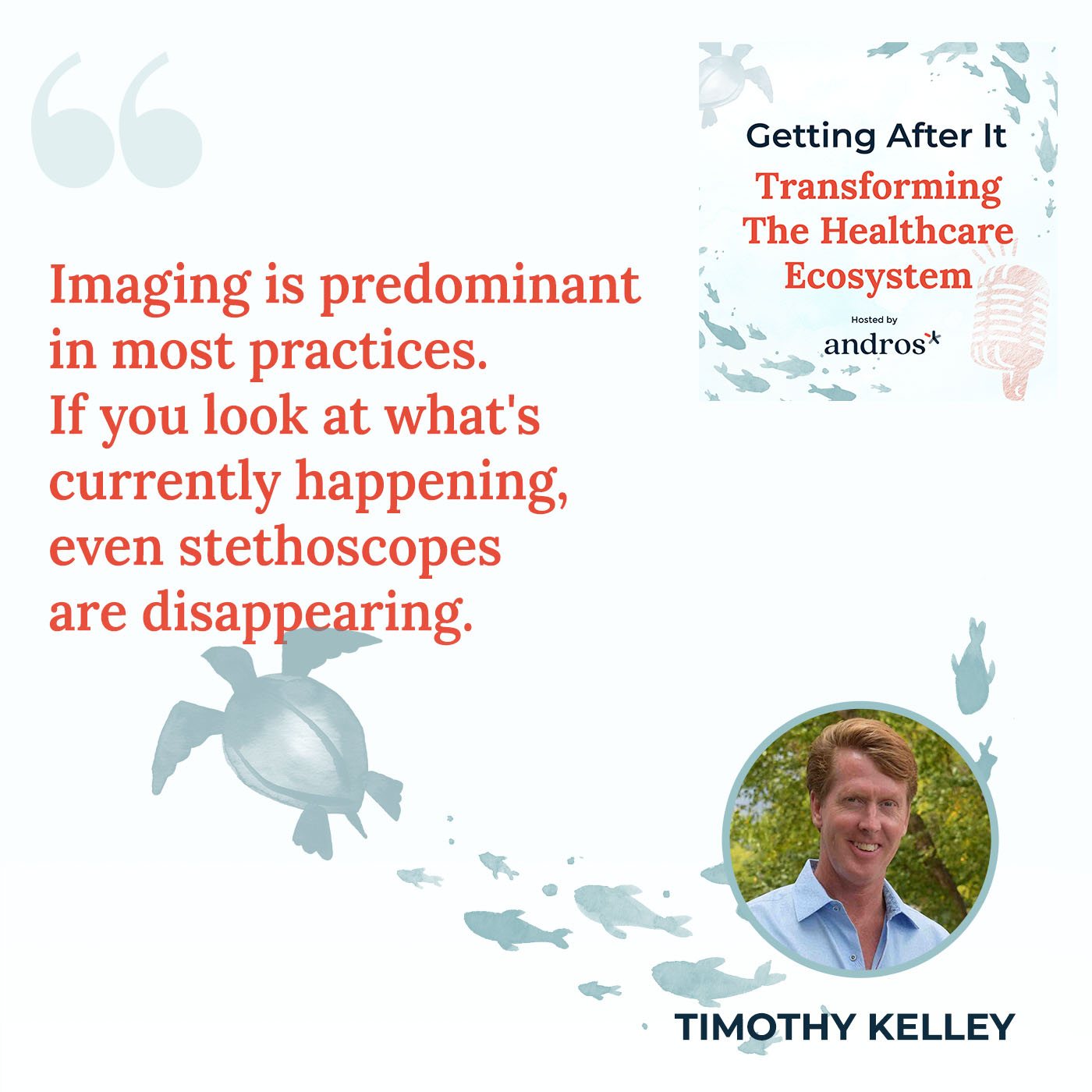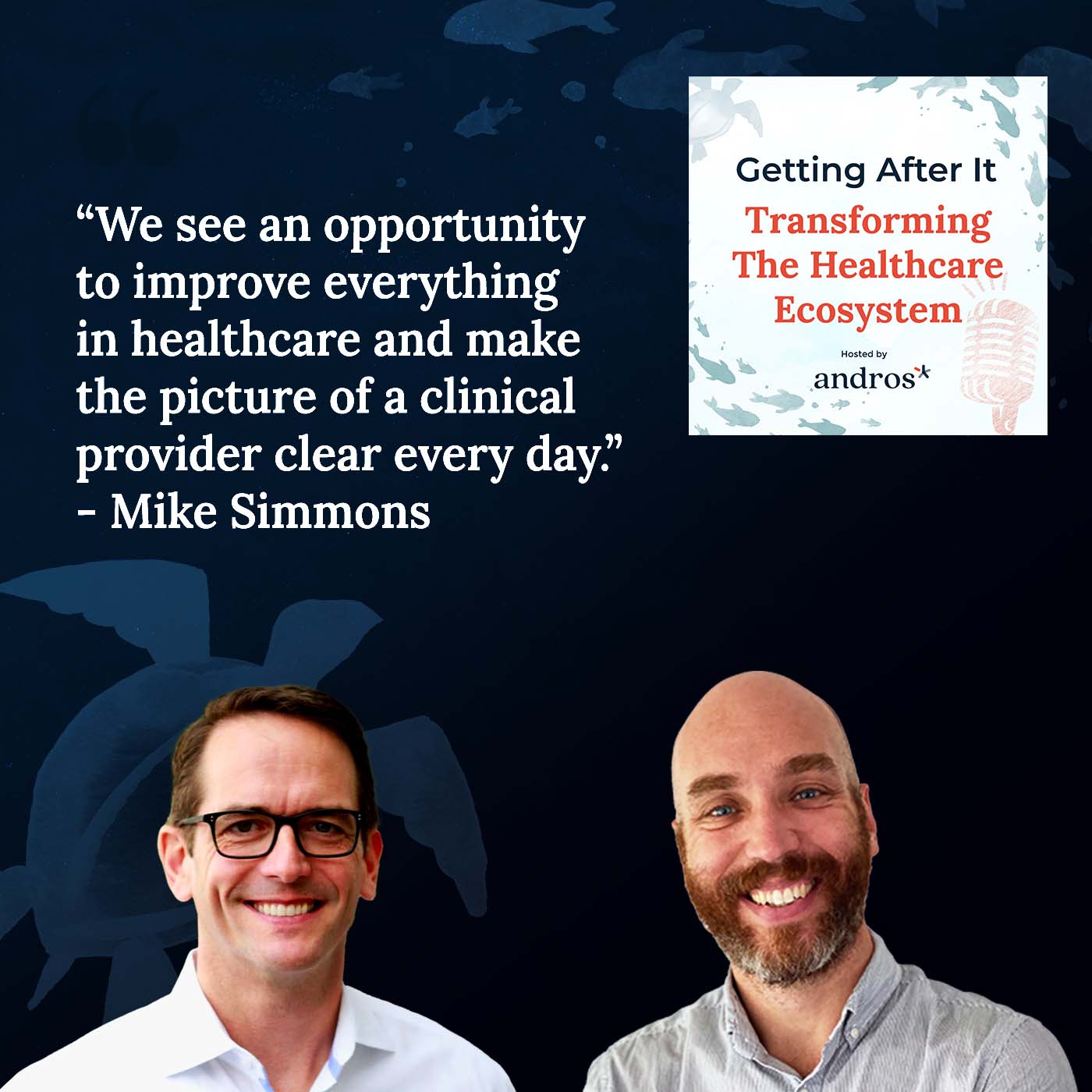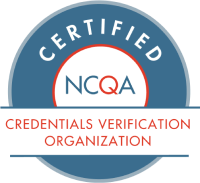
The evolution of technology offers great convenience to many industries. In medical technology, this evolution is set to transform how we provide care for our patients. Today, Mr. Timothy Kelly, the founder of Nautilus Medical, charts the evolution of medical technology in developing medical recording software. He also dives into their newest venture, TeleRay, and how it impacts the healthcare industry. Since imaging is the most predominant in most practices, Tim emphasizes the value of reading the films of what’s inside our bodies. Know more from Timothy and how TeleRay became the de facto standard of medical information distribution for professionals and patients.
—
Watch the episode here
Listen to the podcast here
From CDs To Telehealth – Charting The Evolution Of Medical Tech With Timothy Kelley
We have got Tim Kelley here. How are you doing, Tim?
I’m good. Thanks for having me.
It’s great to get to know you a little bit. I thought we’d start with how you get into healthcare. How did you start in this crazy business that we are in?
A long time ago, right out of college, I worked in pharmacy benefit management before anyone ever heard of that. That started to grow pretty rapidly. That company was absorbed by Caremark. I went to the pharmaceutical rep, which eventually brought me to selling equipment for a big distributor that sold radiology equipment and became very interested in that.
As the digital age started to come of age in the 90s in healthcare, I was brought on board by TDK, the big Japanese conglomerate to figure out how to sell more CDs, video cassettes, and magneto-optical discs into hospitals. We looked at cardiology first replaced semi-film and then radiology with film and tried to get all the docs to start going digital with CDs. I’m one of the guys that can be blamed for that.

Were you a cassette, CD, or LP kid growing up?
All of the above.
You span the whole transition, not 8-track though?
When I was a little kid, I remember I had a little 8-track boombox.
With healthcare, is there a connection with family, friends, and community growing up?
I had a grandfather who was a doctor and some relatives who were in the space. I found it very intriguing to want to be a doctor. I did have the same level of commitment that I have now that I should have had back then toward my career.
The academic rigor is quite a lot to commit to. Some of us ended up on the business side of healthcare. When you were looking at getting into this media component, it sounds like you were recording things activities, or images on these different mediums. Was that the standard at the time?
It was solely becoming the standard. Most sites were looking to replace film and have a digital format of exchange. They were burning discs and magneto-optical discs, which are little hard drives at the workstations. That was a bit cumbersome because you couldn’t then put a patient back in the machine. After all, it would pull all the resources to burn a disc. They weren’t that fast at that time. An 8X burner might take 15 to 20 minutes to burn a disc. We could already have a patient in the system. We developed a network-based CD printer. There were already robotic CD systems out there for marketing, banking storage files, or shelf storage. We just started utilizing those and trying to replace film insights.
Before you got to what you are working on now, was there a disruption moment where it became widely known that just wasn’t going to be adequate anymore? I remember going to get my shoulder imaged and they gave me a folder that had a CD in it, a patient copy of the image. I don’t think I had the reader to be able to even look at the thing, but I had it physical and that was going to go travel to my doctor who was going to load it into some machine. Did that all come to a head? At some point, when was that somebody raised their hand and said, “This isn’t good enough.”
Do you mean the film or the CDs or both?
Either, the film was the original throw-it-up-on-the-light thing.
They used to ship films everywhere and these are very expensive films. A sheet was getting over $2 a sheet and then you could burn a CD for a couple of bucks. In a matter of years, it was a pretty quick turnaround that was a needed application for exchange. We thought when we started doing the electronic exchange, it would be much faster than replacing film because you are not dealing with anything tangible now. It’s completely electronic, which if you look at other mediums out there, whether it’s been marketing or even fax machines has essentially disappeared except for in healthcare.
If you look at your consumer laptops and computers that you put in your desktop, none of them have drives anymore. The last vestige of this is healthcare. As we say now, it’s become the exotic media of healthcare. You can’t use them for anything else. We get people calling and saying, “I popped it into a DVD player and it didn’t play my images.” There’s even that misunderstanding now and people don’t have DVD players anymore. Those have faded out. It’s been a process and a lot of it’s fear of the cloud, but most technologies, when they push into professional areas like healthcare, it’s because it’s much more consumer-driven.
As those employees are more comfortable using the cloud for all different things, whether it’s sharing photos and other bits of data they have, then they are going to stay pushed to their bosses and for their use saying, “We can use this for moving images and patient data.” It’s more secure than a CD and it’s faster and more reliable. It’s the path forward.
On the security side, how much did the word privacy hold up the progress? That’s often something I hear or see in healthcare we don’t have the privacy guardrails to do that, so we are going to stick with the fax machine or with whatever legacy product. I assume that affected this industry as well.
It’s a strange thing because you just mentioned fax machines and they are still considered HIPAA compliant, yet it’s open data sitting just wherever that fax machine is. These encrypted ones didn’t work because you needed something on that computer to decrypt it. Nobody likes other programs running to decrypt something when all the fear of malware and so forth and ransomware is out there.
It comes down to a misunderstanding of what is privacy, what is compliance, and what real security means. That’s one of the things that we do on a mission every day is trying to explain that to customers. Many times we will have a HIPAA compliance officer or somebody in that capacity, and even though that’s their job, they are missing many of the components of what it means to be private and why this is more secure than using the tangible formats. We can lower their liability and even indemnify them, which we can’t do with the CDs.
Maybe just an introduction of what the company is that you are working on now. TeleRay is your latest venture. Give us a little quick snapshot of what that organization is about.
TeleRay is a SaaS platform that is based on moving data. All patient data is oriented around the primary diagnostic tool, which is radiology. We first center on moving the imaging data and then attaching any other data we are allowed to, with that image set so you can get a more holistic view of the patient. That will include the radiology reports, labs, cytology, pathology, and even financial data if they allow us to grab it and add it.
In addition to that, we have extended the tentacles a little bit further. We can do livestreaming of modalities. Place doctors or professionals virtually into rooms so they can guide a technologist or sonographer. For rural health trauma and emergency medicine situations with the lack of doctors and specialists on a global level, the only way to solve some of these problems is through technology, and being virtual is going to solve the problem.
Let me say it back to you, one is the payload of information with the image at its core and then all the context around it. Files, notes interpretations, and financial reports as a secure package of information that can get transported to the place that needs it. The second part is, and probably the word secure pops up again in your conversations, the secure communications and a channel for an expert to virtually be in the room while a procedure is happening and guide somebody who doesn’t have quite the expertise that the outsider does so they can collaborate to perform a procedure or interpret something. Am I getting that right?
You are exactly right. That’s what we are trying to solve there. Let’s say, we are on Zoom right now. If you were my doctor and if Zoom had some of these capabilities, you could bring my images or labs right up on the screen. Give that visual and still, while talking face to face, have a consultation, and say, “This is where you have a broken bone.”
If you are an oncologist, “Your disease state is where you are progressing and beating this,” or whatever the situation may be. It’s a much more meaningful conversation if you can also have those visuals. Just like in the prior days, the doctor slapped your images up in the lightbox so we could show you what was going on.
Are there places in the healthcare ecosystem that are riper for this technology? Orthopedics, for example, is that a little bit easier lift with how they are getting paid and the risks that they can take in bundled procedures that are more apt to support something like this? Is it more critical care solutions that need real-time expertise or both?
We are focused on imaging first, it’s anyone who is doing imaging, and that keeps expanding. If you look at the 700,000 doctor’s offices in the US, 500,000 of them have some type of imaging device, if not more than 1. Imaging is very predominant in most practices, “Let’s take a look inside to see what’s going on.” If you look at what’s going on, even stethoscopes are disappearing and in place for point-of-care ultrasounds that pick up Doppler and a view of fluid in the lungs or whatever else may be going on.

With that, you have these doctors and specialists starting to do all their readings because there are not enough radiologists. More orthopedics, gastroenterologists, and podiatrists, based on their specialty, are becoming better at reading the films. If they see something that may be more of an issue, they will send it off to a specialist radiologist. Many times they are doing their reads, their reports, and keeping that in-house, which if they are efficient, will also increase their billing. Also, in many cases, faster speed to care for the patient because it’s on-site. We see what’s wrong and we are going to fix it right away.
What’s the feedback amongst the insurance payers then?
That’s a varied thing depending on who it is. There’s what we call healthcare’s dirty little secret. There are a lot of rescans that go on radiology. Radiology surpassed pharmaceuticals in 2014 as the most expensive facet of healthcare. Most people can’t even believe or comprehend that.
No, I can’t. I didn’t know that.
They want to keep these MRIs and CT machines running. Many times with the data being moved and this is often on CD, if those images can’t be restored, the patient is sent in for a re-scan. That adds billions of dollars to healthcare and slows down the speed of care costs. At the end of the day, you are a consumer in this space, you are paying a lot more for the same service. You wouldn’t go and get your oil changed twice in three days. In radiology, it happens constantly. If you look at radiation then, and that was CT machine, CT is responsible for about 2% of cancers in the US. That’s a big problem.
[bctt tweet=”CT is responsible for about 2% of cancers in the US. ” via=”no”]
It’s beyond waste. It’s a healthy risk. For the folks that are around those machines either receiving the treatment or administering the treatment. I assume that they have a byproduct of some of that radiation as well.
It’s a big issue and it’s just swept under the rug. We try to expose it based on the fact that we move data, it has to be 100% usable in a universal format. It’s one thing to move something from A to B, but if you can’t use it, you have achieved nothing. That’s a big part of our focus to try to eliminate that without getting the payers or the providers upset just saying, “We just do it the right way.”
The expert opinions, the radiologists, a lot of them are working from their home now. Are they the chief supporters of technology like this so that in your rural case, if they have a contract to do some consulting or remote work with a rural hospital, they prescribe it and say, “There’s a better way to do this? If you use this technology at your facility our collective results are going to be better.”
We have a lot of those as our advocates, and generally, it’s because of the money element of it. If they are reading a duplicate scan, they may not get reimbursed for it. They have done the work because they say, that’s for the same patient for the same reason. They are scanned twice and they want to make sure they collect the reimbursements because they are getting squeezed all the time on what they are going to get paid from the payers for that.
I have to believe that not all parts of the globe are created equal in this area of work. There are plenty of social determinants of health problems or issues within our US-based healthcare system, but it gets big in some parts of the world.
It’s a global issue. Again, lack of specialists and so forth. What’s great in some of these countries where, if you look at the socioeconomic strata, they can’t pay as much and there’s not as much access where these technologies can solve both of those problems. They have the opportunity to lead the curve with 5G phones and not need some of these networks that the US is dependent on.
What are you guys doing to support some of those tough-to-reach areas? I’m sure there’s some experimenting, but also some giving that you are doing for the greater good.
We will discount to help out in areas and we have a humanitarian side of the business where we look at just providing those services in certain situations in any type of emergency situations. Patients are always free on our platform. Any patient can create an account, upload their data, and then have it at their fingertips on their phone, their iPad, or wherever they are in the world.
How do you think this will evolve in the next several years? It was hard to predict all those mediums that we had when we were kids going from one to the next and each one was more novel than the next. What do you see around the corner especially around AI coming into play?
AI is going to be the biggest factor in this. A lot of AI sits on an island, it’s not usable unless there’s something to enable it. We have a bunch of AI partners where we enable their capabilities and there’s still some resistance to that, but in other parts of the world, resistance can’t even be an option because there’s no one to read it except the AI. Whether it’s a fast musculoskeletal read or a heart read where it does automatic ventricle measurements to say, “We can give them Lasix,” or, “He needs to go into surgery immediately.”
There are all these variables that can triage a patient and where they need to go. That applies from rural health to out in the bush, where there’s a lack of any supported health to make a clinical decision. There’s some AI coming out that we have looked at some of these shows where from the camera on your phone, they can read your face and tell you your blood pressure and some other markers to give them indicators, different disease states. Those things are remarkable. Eventually, you will be able to breathe into your phone, and it will read biomarkers from your breath to give a lab report. In the next several years the speed at which it’s coming is fantastic.
How do the clinicians feel about all of that? Are they excited because their work becomes more scalable and they are practicing at a higher level of their licensure? Are they nervous that, “Is this job that I’m doing going to be less important or more obsolete?”
It’s a binary situation because they are overworked and overstressed right now but also afraid of these AI tools at the same time when they start to realize that it relieves a lot of that pressure. My belief is they will be better at their job. At the same time, technology is advancing fast in the modality. Now you have a CT machine that’s doing 4,000 slices and there’s no radiologist that’s reading all those. You have to have something that points out that these are the key images for you to look at. That could be true of even listening to a doctor saying, “Look at this segment here, not the entire study.” At that point, they can become much better at their job by looking at the critical data and not wasting time with the noncritical data. You are going to see better outcomes for patients too.
That’s a win all around. I’m looking at it through the lens that we live over at Andros every day is around credentialing and network development. One of the things that has been a challenge, or maybe a boom in the market is practicing without borders. How can I practice in 50 states the next day versus a couple of years ago I’d be licensed in 1, 2, or 3 states? Are you seeing that as well with how this technology is supporting virtual care?
There needs to be more done with that. Look at lawyers, if you have the Illinois bar and the Florida bar that covers 47 states, something like that. That should be the same in healthcare. Just like with the law, how many variables are there? There may be some coding issues and things like that with certain states, but overall it’s so close to that. There are some other issues with credentialing as you know.
Everything in healthcare, we see an opportunity to improve and make the picture of a “clinical provider” clear every day versus only clear once a year or every other year when they renew something. We are struggling and scratching our heads. There’s general agreement with you that the similarities outweigh the differences from the state-to-state or practice-to-practice standpoint but we are not there yet. It’s good that there are companies like you that are pushing that envelope because of the demand to get credentialed staff without borders working with different facility organizations, provider groups, or even payer groups. It’s good for everybody.

It’s interesting that you look at the equipment and then even the pharmaceuticals that can be sold in every state, which end up being pretty much status quo or their use. A technologist can travel from state to state using that license because they are accredited by a national accreditation company, not in that state. There could be something like that for doctors where there’s a benchmark and if you hit that, then your credential in all 50, and that would be a good route to go.
Final thoughts on how you think this business’ imaging, this expertise over the airwaves, or a combination of airwaves and wires. How’s that going to shake out over the next several months?
There’s a lot that’s going to stay the same that shouldn’t and a lot that should change that will start moving. We are looking forward to that tipping point where these sites say we have had enough of CDs, they are just coasters now, and we are not buying another one. That will help push that move toward data. As I mentioned before, radiology is the primary diagnostic tool. Everything should be built around that. That’s how data should be moved.
[bctt tweet=”Radiology is a primary diagnostic tool. Everything should be built around that.” via=”no”]
One way to help drive it is we have patients start demanding it. They forget that they have rights and they are consumers. They are paying a lot of money out of pocket, which makes you a consumer. If we were in a restaurant or elsewhere and treated the same way, we’d say, “No. I won’t ever eat here again.” Yet we put up with it and it’s ridiculous. We have to act more like consumers in this space.
Tim, thank you for spending time. This has been a great education for me and opened my eyes to what I now know is bigger than pharmaceuticals as far as spending goes. Now I know somebody who’s in the center of trying to make a change for the better. I appreciate it.
Thanks for having me. Hopefully, we can work together sometime soon.
That sounds great.
Important Links
About Timothy Kelley
 Born and raised in the Chicago area, Mr. Kelley is an experienced business planner with extensive experience in marketing products in the medical arena. Marketing pharmacy benefit management, selling of pharmaceuticals, to veterinary pharmaceutical and medical equipment distribution, led Mr. Kelley to forming Sutherland Technologies, a business of marketing medical grade media (CDs, DVDs) to hospitals worldwide under an outsourced management agreement with TDK. To further promote the sales of this media, the company developed a recording system to place medical images on to CDs.
Born and raised in the Chicago area, Mr. Kelley is an experienced business planner with extensive experience in marketing products in the medical arena. Marketing pharmacy benefit management, selling of pharmaceuticals, to veterinary pharmaceutical and medical equipment distribution, led Mr. Kelley to forming Sutherland Technologies, a business of marketing medical grade media (CDs, DVDs) to hospitals worldwide under an outsourced management agreement with TDK. To further promote the sales of this media, the company developed a recording system to place medical images on to CDs.
With the rapid success of this developing market, Sutherland Technologies was absorbed by TDK to better apply internal resources to this burgeoning market. Managing nearly 40 sales and marketing professionals, Mr. Kelley expanded marketing throughout North and South America and the European community. The establishment of key OEM partnerships with GE, Siemens, and Philips put TDK Medical products at the forefront of this market.
Upon leaving TDK Medical, Mr. Kelley founded his own radiological recording and media company Nautilus Medical for the purpose of developing medical recording software. During this time, Mr. Kelley applied his experience with medical information recorded on CDs to develop a new business model of disseminating key information on a platform for medical professionals that include patient information from disparate EMR and clinical systems along with medical information as a complete patient profile for exchange.
After Nautilus, he formed TeleRay as a medical communications platform that connects image management, storage, results, and patient data though a telehealth/telemedicine network. TeleRay allows for face-to-face consultations while viewing images and results for consent, tours, better understanding and better outcomes. Whether tis professional to patient or professional to professional, TeleRay connects the community in a complete and holistic manner- including live-streaming of modalities during a procedure. As CEO of TeleRay, Mr. Kelley will continue development of the company vision of becoming the de facto standard of medical information distribution for professionals and patients.


